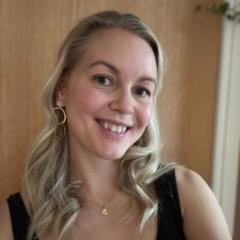Coaching call 17th September 2025
- WORK & IDENTITY: We discussed a common theme - trying different health-promoting routines but falling out of them due to heavy workload- especially the invisible work we do that still takes time & energy (both in workplace + at home as women as we talk about in the course). During vacation or anytime we have more space to reflect, we may realise that: “you are not your job, I don’t want to identify with my job, my body is trying to communicate something with me through its symptoms - listen to it”. - BOUNDARIES & COMMUNICATION: The learnings in R2T incl. settIng boundaries - first to yourself & then to others around you - is a first step in turning realisations into —> changed behaviours —> new reality. - HOW you communicate your boundaries is almost more important than WHAT you say - be ready to communicate differently depending on the receiver - SPEAK THEIR LANGUAGE. E.g. a workplace likely wants objective data/examples of how your workload doesn’t add up with the time available + rather than complaining with no solution - create a case, clarify that they get more out of you by changing your work conditions, ask them to help you do a better job - whereas in a personal relationship you can rely more on how a situation makes you FEEL (more subjective, although objective examples can also help to back up your case). - If you don’t see any improvements after setting boundaries - ask yourself: can I change myself in this context, or do I need to change the environment? You may need to remove yourself completely if you see no improvement, and accept this. - If you struggle to set boundaries e.g. in the workplace - make it less about you and more about the people walking in your footsteps who you’re helping. - STRESS & BALANCE: The journey often goes stress → drained → isolated → questioning everything. Funnily enough - this negative spiral can come at both extremes of the spectrum, neither will be health-promoting - either: Having too much free-time/less purposeful work → procrastination & not feeling fulfilled, inefficiency, craving more structure & discipline, disappointment with oneself OR having too little free time → inadequacy, nervous system dysregulation, isolation/overwhelm/shutdown, disappointment with oneself etc. So we often link productivity to stress, where two extremes show up: stressed when there’s too little to do, and stressed when there’s too much to do. We wanna return to a middle ground and remind ourselves daily that PRODUCTIVITY ≠ (negative) STRESS.
0
0
NEW COACHING TIME @ 18:30 Wednesdays
Please observe that the new coaching time is 18:30 on Wednesdays to try to accommodate for all your different schedules 🙏 If we see a need to change it again in the future, let’s discuss 💗 I also want to take the opportunity to ask you to send me any feedback - positive or constructive - whenever you want or see the need. My eyes & ears are all yours & you help me to make this membership the best it could ever be 💗 Have a wonderful weekend dears!
Coaching call 10th of September
- Humans are goal-oriented — we thrive when progressing toward something. But, as we’ve discussed lots, extremes don’t serve us. We can even breathe too much air and drink too much water 🫠 - Doing nothing for too long can leave us feeling lost or purposeless, especially when limiting beliefs keep us stuck in the familiar. - Yet chasing goals too forcefully can push us past our limits and make us forget our “why.” - True fulfilment isn’t found in “monk mode” or “endless holiday mode,” but in the golden middle ground: balancing effort with ease, action with presence. - Join next week’s coaching call for a meditation on this ✨ - Another key point: our attitude can often determine how easy or hard it is to overcome resistance. E.g. telling ourselves the gym “sucks” will only make it 1000x harder to go. Some things — exercise, eating well, doing admin — we just need to do because they support our body, mind & spirit. Focusing on the benefits, not the effort, will make life a looot easier. Sometimes we gotta tell ourselves “Just do it” (cheers Nike). - But another learning is to reflect & identify WHAT causes the resistance! E.g. you may dislike the gym not because it's tough, but because it's noisy and busy. In which case changing gyms to a calmer one will help you to overcome your resistance with less effort than "forcing yourself to go". - The app ‘LADDER’ was recommended for gym inspiration/tutorials - great if you need a lil extra gym boost this autumn. - Reminder: your thoughts are not truth — especially in luteal/period phases when hormones play tricks with you. Just ride out the storm, OR even better - write them down/say them out loud to someone you trust and you will notice how irrational they sometimes are 😵💫 - When life feels overwhelming, balance often comes from stripping away, not adding. Say no to what overloads your bucket and return to basics. Back to what you KNOW works, which is very individual to you. That’s where the SOS list exercise from the course is a very useful starting point. - Example: one participant’s been overwhelmed recently but felt lighter simply by cutting things that have been poking at her attention, focusing instead on (1) Being phone-free & physically present with her son, and (2) moving her body — both energy-giving anchors when faced with life’s current challenges. BACK TO BASICS ⚡️🙌
1
0
Coaching call 13th August
💡 MAIN TALKING POINTS: - PRACTICE TAKING UP SPACE — in voice, posture & presence - TRUST THAT YOUR CONTRIBUTION IS VALUABLE — don’t just “know” it; FEEL it in your body. It’s OK if this doesn’t come naturally, but over time it will feel more natural. Practice makes perfect. - BODY REACTIONS ARE NORMAL SIGNALS, don’t be afraid of them. Aim for the “optimal arousal” zone (see graph days 3 + 8). Meta-stress (stressing about stress) tips you into the right side of the graph (anxiety) - CONTEXT MATTERS: Environment — especially family — shapes your state. You can’t always change them; but you CAN change your response & boundaries. - USE EXPANDERS (role models - online + offline) to rewire your brain into feeling like the “impossible” is possible. See day 6 for studies on how much the people around you (+ their limiting beliefs keeping them stuck) affect you. + de-trigger when needed - see action below. ✅ ACTIONS - DAILY VISUALISATION — learn about neuroplasticity & do actions days 4+5 - practise “as if” until your body believes it - DO VISIBILITY REPS — start a convo with a stranger, ask a question in a meeting, tell the waiter how you want your food prepared, practice sharing your opinion amongst your friends (don’t just follow the herd) - REWRITE YOUR STORY — become aware of the narrative you’ve been telling yourself keeping you stuck in the same reality → craft a new one-liner & repeat it in journaling + IRL as if it’s already you’re reality. Feels like lying, but it’s not - you’re just envisioning the future 😏 - DE-TRIGGER when needed — e.g. my Trigger Release session available on Spotify/Youtube What was your #1 biggest takeaway @Katja Hedlund & @Linnea Sandberg ?
Coaching call 3rd of Sep
I am so sorry for not summarising last week’s coaching call until now. My life has taken interesting turns recently nudging me to be present offline. Let’s try to recap what we talked about, shall we? KEY TAKEAWAYS - When doing visualisation meditations, painful emotions or even pain in your body can surface because suppressed feelings are brought to light. Allow them to come, without judgment or fear. This too shall pass - but it’s only by bringing it to light that we take back the control. - At first, stillness (e.g. due to illness or other reasons you can’t “run” from your feelings) can bring anxiety or other unwanted feelings due to the urge to want control, to “sit in the driver’s seat” and know where life is heading. But it’s in the silence & stillness - particularly the removal of (digital) distractions - that we allow for deeper presence, deeper understanding of ourselves. It also allows us to cherish more the small moments, which essentially are what add up to form our life. - Setting boundaries is so important and an important part of the work in R2T. 2 things to bare in mind: 1) HOW we communicate our boundaries can often be more important than WHAT we say. This involves explaining how the boundary will help you to show up as a better version of yourself in the relationship where you’re setting boundaries. Yet, 2) Sometimes communication isn’t enough — you may need to physically remove/distance yourself from a relationship if the other part refuses to respect your boundaries. - There’s a two-edged sword between focusing on a single task/opportunity, and letting perfectionism or other limiting beliefs hold you back from “taking the leap” or meeting your true potential. On the one hand, focusing wholeheartedly on a single opportunity (e.g. a project, a startup idea, one book at a time etc.) will get you faster to your goal, with more impact & less stress & less “overhead costs” (from double admin/switching between tasks etc.) as Cal Newport calls it in his book “Slow Productivity”. On the other hand, many of us choose to focus on something that society has told us is “respectable”, yet it doesn’t give us pure fulfilment or joy. We often go on autopilot rather than stopping to ask ourselves: “is this truly what I desire from life?”, in addition to unconsciously being held back by limiting beliefs like “this isn’t/I’m not good enough, so there’s no point in me even trying because I will anyway fail”. So in periods of our life, we may want to have 2 projects going on simultaneously e.g. one that pays the bills, the other that gives us true fulfilment & helps us grow outside of our comfort zone & teaches us to take action even if it isn’t “perfect”. - There can be a tendency to “protect oneself” by telling others about our so-called flaws, but words can become self-fulfilling prophecies - the stories we tell ourselves & others can over time form our identity ⇒ and therefore also our reality. - Breaking an old identity or belief about yourself that no longer serves you (e.g. “people always think that I take up too much space” or “I never have anything interesting to contribute with” etc.) starts with rewording the story in your head AND out loud. Immersing yourself in new environments is a great way to practice rewriting the stories you tell about yourself, until it’s become so ingrained that you can stand firmly in that identity even in existing relationships. - A fast track to rewriting such beliefs / identity shifts is visualising yourself as the person you WANT to be whilst in deep meditation/after breathwork when you’re in gamma/theta/alpha brain waves. You practice this in the course actions. - A comforting reminder: Everyone is so focused on themselves that they rarely have time to dwell on you as much as we think they do. - Any thought can be reframed — turning pain or challenge into meaning, and helping you to find positivity even in difficult situations. See picture in comment section.
1-8 of 8

skool.com/revive-to-thrive-7035
Rebalance from chronic stress, reconnect with you & build lasting habits - guided by science & self-regulation techniques, together in sisterhood.
Powered by






